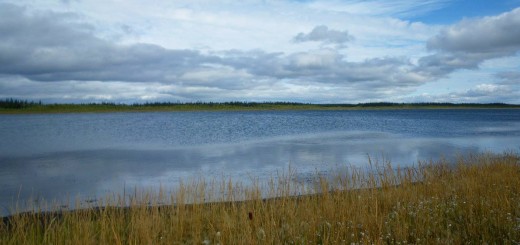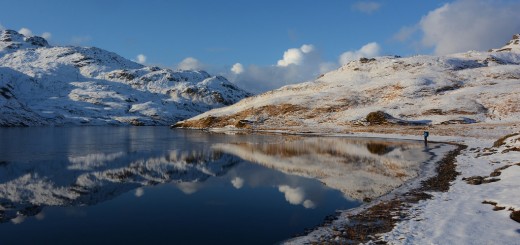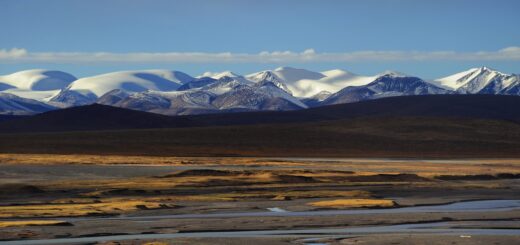Northern Lake Methane Emissions
0In the United States, the largest contributor to methane emissions is oil and gas exploration. This is followed by those added from herds of livestock, landfills and coal mining. About 8 percent of the total emissions come from undetermined sources.
These sources are typically natural ones, meaning methane from Earth is being discharged somehow into the atmosphere. This includes releases of the gas from lakes and other bodies of water not typically associated with the issue of methane emissions.
But ongoing work by scientists serving in the Permafrost Carbon Network has revealed new findings that underscore the importance of understanding how lakes, especially in high northern regions, will continue contributing to methane emissions — not just in the U.S., but globally.

Stream water, enriched in dissolved organic carbon and methane, flows over the ice on Toolik Lake during early snowmelt. (Credit: Sally Macintyre / University of California at Santa Barbara)
That’s because of a sort of perfect storm that’s brewing in the area, bringing together increases in thawing permafrost, overall climate warming and longer ice-free seasons that may very well push the amounts of methane emitted from northern lakes higher.
A study co-authored by scientists at the University of California, Santa Barbara, predicts such a future. And the methane emissions increases its authors predict range anywhere from an extra 20 to 50 percent of what they are today, considering an extension of the ice-free season by 20 days. The fear from those predictions are that more emissions would spur more warming, which would in turn spur more emissions.
Given this risk of a feedback loop, researchers say that efforts to reduce human-caused warming are even more urgent. Further reductions in fossil fuel emissions are paramount, because they would achieve reductions in warming while also logging decreases in these type of natural emissions, a sort of double victory.

Prior to ice on, meteorological instruments on the shore of Toolik Lake in Alaska. (Credit: Sally Macintyre / University of California at Santa Barbara)
To make the findings, scientists compiled previously reported measurements made at a total of 700 northern water bodies. From there, they used the data to more accurately estimate methane emissions over a broad scale. In the northern region, they found, methane emissions from lakes and ponds alone are equivalent to roughly two-thirds of all natural sources of methane.
Full results of the study are published in the journal Nature Geoscience.
What can be done to reduce methane emissions around the world? Should more or fewer efforts be aimed at lakes? Please consider leaving a comment to share your thoughts!













